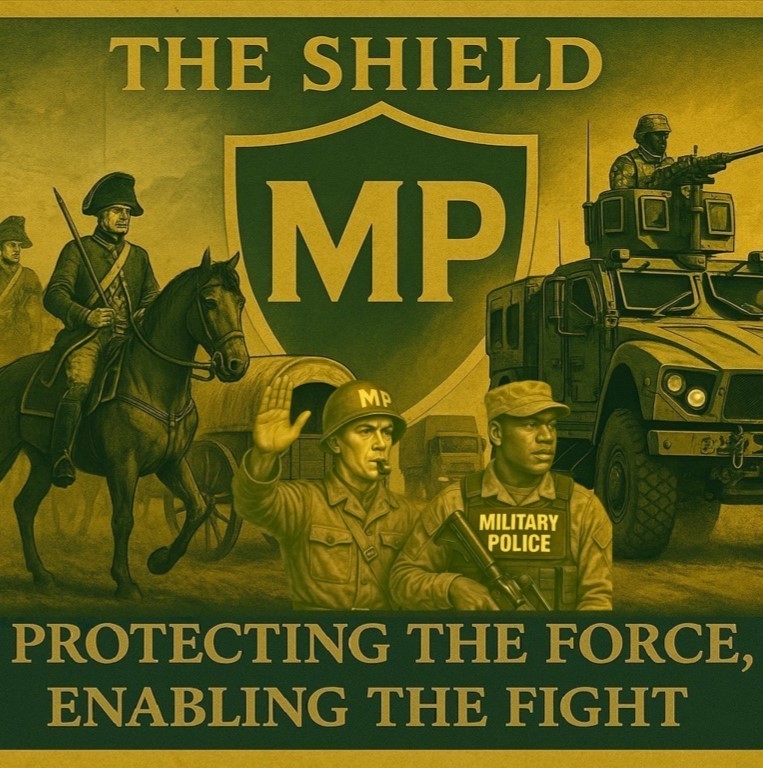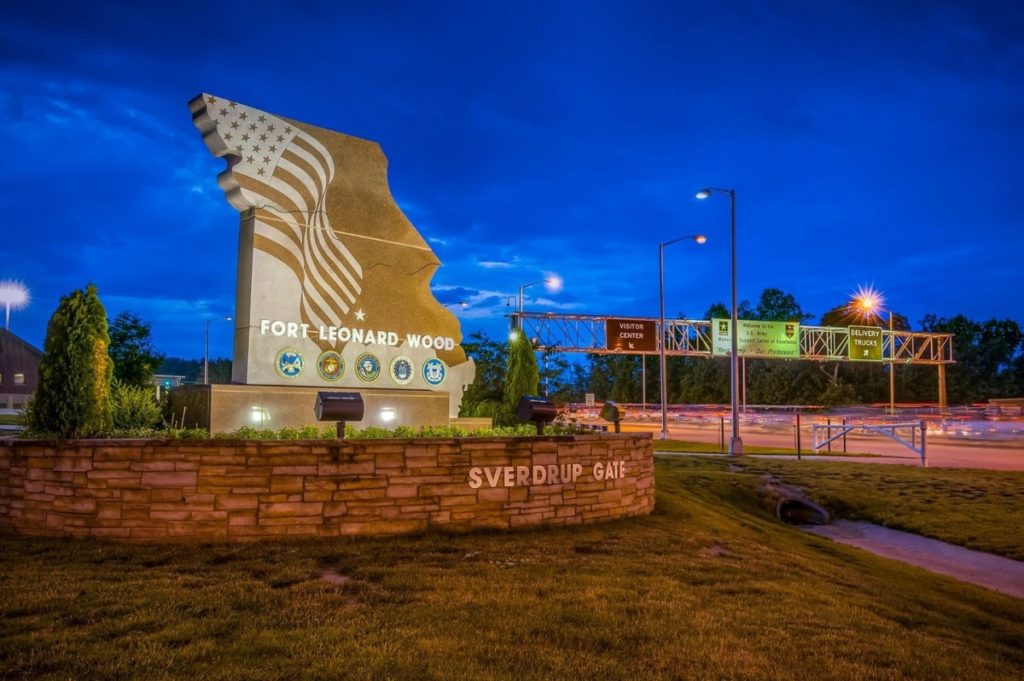Amanda Sullivan
FORT LEONARD WOOD, Mo. (June 11, 2021) — All was not always as it seemed to enemy troops during World War II courtesy of units assigned to the U.S. Army’s 23rd Headquarters Special Troops. Skilled in deception tactics, this covert unit of 1,100 service members — 20 hailing from Missouri — were known collectively as the Ghost Army, and they used a variety of unique tactics to keep the enemy off the heels of American Soldiers.
Roy Eichhorn, founding member of the Ghost Army Legacy Project, told the unit’s history to engineer Soldiers at Fort Leonard Wood during a special presentation held June 2 at the 35th Engineer Battalion.
Eichhorn said inflatable tanks, sound effects, radio trickery, impersonation and imagination were used to fool and divert the enemy.
The unit was comprised of a diverse group of American Soldiers, who came together and bonded to complete covert operations using many tools — the most important of them being creativity.
“I think it is important for Soldiers to appreciate how important creativity is,” Eichhorn said. “Creativity, here, is not creating something from nothing; it is masterful improvisation. As good as the dummy tanks were, for example, the skill was not in the equipment; it was in the Soldier.”
The event, organized by Florian Waitl, U.S. Army Engineer School command historian, and historian Samuel Roberts, focused on the development, operations and successes of the covert unit whose actions were classified until 1993. Because of the classification, it has taken years for the legacy project to compile the stories and information.
Waitl said the story of these Soldiers may never have been told.
“Since the Ghost Army was such a secret organization, and almost everything they did was classified, the Army’s collective memory on this subject may have been lost to history if it wasn’t for the volunteers of the legacy project,” Waitl said.
Eichhorn agreed.
“They didn’t have doctrine,” he said. “They were problem-solving and building the doctrine while they were in operation. That is a bold thing to do when people are actually shooting at you.”
According to Eichhorn, many of the Soldiers in the unit may have never considered the military under other conditions.
To successfully develop a deception unit, the Army had to find Soldiers who were already trained and experienced in their professions that they could then train in military skills — many of the Soldiers of the 603rd Camouflage Engineer Battalion, for instance, were recruited from art schools.
Eichhorn said the Soldiers in the Ghost Army constantly looked at the same thing in many ways and adapted them to achieve a new purpose.
“There are all sorts of examples where they took several odd things and put them together in a new way,” he said. “They were inwardly motivated and would assess their own work and were comfortable being their own judges.”
According to Waitl, the small group of Soldiers not only did more with less, but did different with less and were very successful.
“Throughout history, engineers participated in many different missions that we might not see as the traditional engineer missions we are used to today,” Waitl said. “One constant throughout history though, is the idea that engineers are problem solvers and innovators and the story of the Ghost Army is exactly that.”
Waitl hopes learning about previous generations of engineer Soldiers will inspire current and future ones to be more successful and lead to a deeper appreciation for the Army and Engineer Regiment.
“History can be a powerful tool when utilized properly during professional military education and leader development, and the Ghost Army is a proud part of the Engineer Regiment’s history from which we can learn,” Waitl said.
According to Lt. Col. Aaron Williams, USAES chief of staff, the opportunity to learn about unique facets of Army engineer history like the Ghost Army is “significant to the growth and development of our officers and noncommissioned officers at all levels.”
“Executing camouflage and deception operations are challenging tasks that have significant value and, when employed in operations, can truly determine the outcome of a conflict,” he said. “Learning and understanding the purpose, skillset required and effectiveness of these operations reinforces our need for officers, NCOs and Soldiers who are creative, innovative and critical thinkers, and can operate beyond normal restrictive parameters.”
For one of the attendees, Capt. Danielle Nuszkowski, the presentation achieved its purpose.
“The history, evolution and ingenuity of deception operations piqued my interest and curiosity about how we, as an Army today, are leveraging deception operations — and how our enemies are using deception,” she said. “With the complexities of the multi-domain operating environment, understanding deception is another layer to holistically understanding our capabilities in order to optimize our efforts in future conflicts.”
The Ghost Army Legacy Project was formed to educate people on the unit and over the years has had one historical marker placed in Bettembourg, Luxembourg, at the site of one of the unit’s missions. They hope to have another placed in France later this year.
Eichhorn, whose father served in the Ghost Army, and the legacy project are working hard to ensure the Soldiers of that unit are given the proper recognition.
“Because so many Soldiers kept the secrets, as they were told to do, to the grave, we are working hard with Congress to get formal recognition for the unit,” he said. “My dad really disliked the term ‘heroes,’ as it is often applied to everyone of that generation, but he was always proud to have been a Soldier and an engineer.”
For more information about the Ghost Army, visit www.ghostarmylegacyproject.org.

-30-
About Fort Leonard Wood
Fort Leonard Wood is a thriving and prosperous installation that has evolved from a small basic training post more than 75 years ago to a premier Army Center of Excellence that trains more than 80,000 military and civilians each year.
Fort Leonard Wood is home to the U.S Army Maneuver Support Center of Excellence and three U.S. Army schools: the U.S. Army Engineer School; U.S. Army Chemical, Biological, Radiological and Nuclear School; and the U.S. Army Military Police School. In addition to training engineer, CBRN and military police specialties for the Army, Fort Leonard Wood also provides gender-integrated in-processing and Basic Combat Training for new Soldiers.
Fort Leonard Wood also hosts and trains with the largest Marine Corps Detachment and Air Force Squadron on any Army installation as well as a large Navy construction detachment.
More information about Fort Leonard Wood is at: https://home.army.mil/wood/index.php/about/mission


